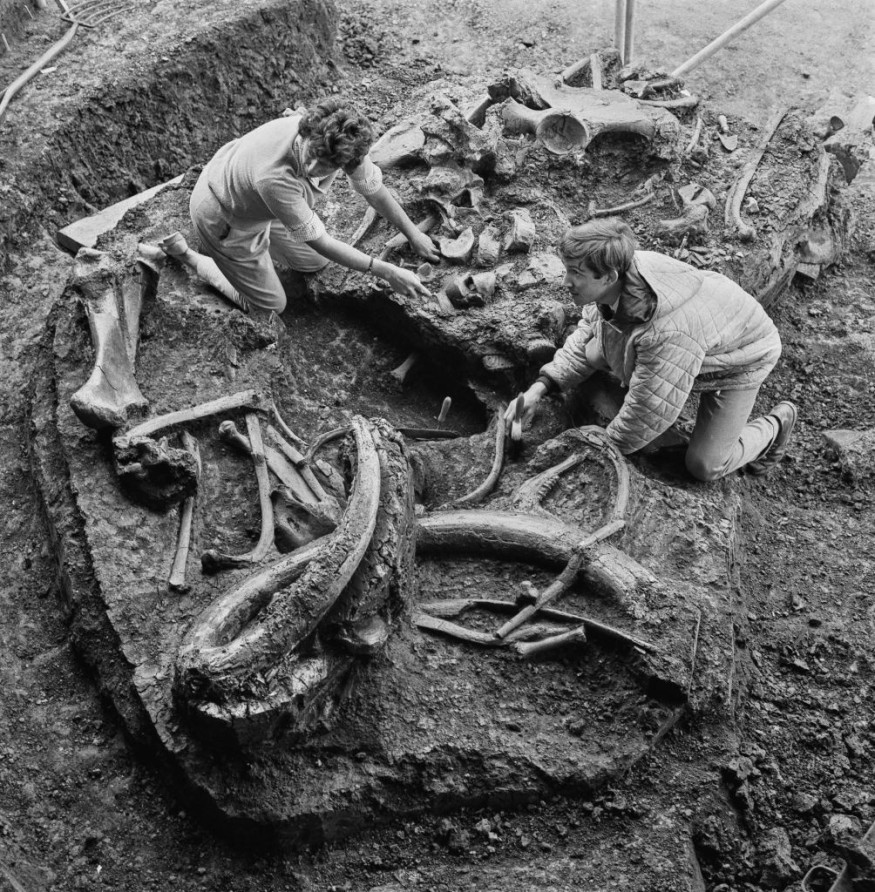
Archaeologists and palaeontologists were astonished after having uncovered remains of five mammoths from 200,000 years ago after an archaeological dig. The extensive remains unearthed from a mammoth 'graveyard' near Swindon were two adults, two juveniles and an infant, along with Neanderthal stone tools, who are likely to have hunted these trunked mammals.
The five bony remains in "an extraordinary state of preservation" were believed to have died during the last ice age at what is now a quarry in Swindon, a town in southwest England.
"Finding mammoth bones is always extraordinary, but finding ones that are so old and well preserved, and in such close proximity to Neanderthal stone tools is exceptional" said Lisa Westcott Wilkins, the co-founder of DigVentures, the crowdsourced archaeological outfit in the U.K. that led the excavation.
Alongside the mammoth remains were Neanderthal tools including a hand ax and small flint tools known as scrapers.
Historical Ice Age Remnants
DigVentures had organized two field seasons in 2019 and 2020 to excavate the site where more ice age remnants were uncovered. Aside from mammoth remains, such as tusks, leg bones, ribs, and Steppe mammoth vertebrae, fossil hunters, Sally and Neville Hollingworth also found delicate beetle wings and fragile freshwater snail shells in the graveyard they discovered themselves.
According to the researchers, the site could be dated back to 220,000 to 210,000 years ago, toward the end of an interglacial, or warm period, when Neanderthals still inhabited Britain. However, Neanderthals moved farther south when temperatures dropped significantly.
In addition, they noted that the five individuals at the graveyard seem to have shrunk during the especially cold ice age, considering that early Steppe mammoths typically stands up to 13.1 feet (4 meters) high at the shoulders.
Since only a fraction of the vast site had been excavated, DigVentures expects to dug up more remains of prehistoric evidence at the gravel quarry.
Also read : How do Some Meteors and Meteorites Cause Mass Extinction? Scientists Explain that It Isn't All About Size
A "Glimpse Back in Time"
The team is looking forward to understand why many mammoths died at one spot and whether they were hunted or were their remains had been scavenged.
A BBC documentary "Attenborough and the Mammoth Graveyard" with evolutionary biologist Sir David Attenborough and Ben Garrod who joined filming on the site described the graveyard findings as "one of the most important discoveries in British palaeontology" and "incredibly rare".
"Where these mammoths lie in the ground is exactly where they died a quarter of a million years ago - next to incredible things like stone tools and the snails they trampled underfoot," said Garrod.
Duncan Wilson, the chief executive of Historic England, a British historical preservation body also said: "The findings have enormous value for understanding the human occupation of Britain, and the delicate environmental evidence recovered will also help us understand it in the context of past climate change.
"Through these finds and the research that will follow, we look forward to further light being shed on life in Britain 200,000 years ago."
DigVentures hope to continue excavations once further funds have been raised. Meanwhile, the site is now protected from fossil hunters by natural flooding.
© 2025 NatureWorldNews.com All rights reserved. Do not reproduce without permission.





